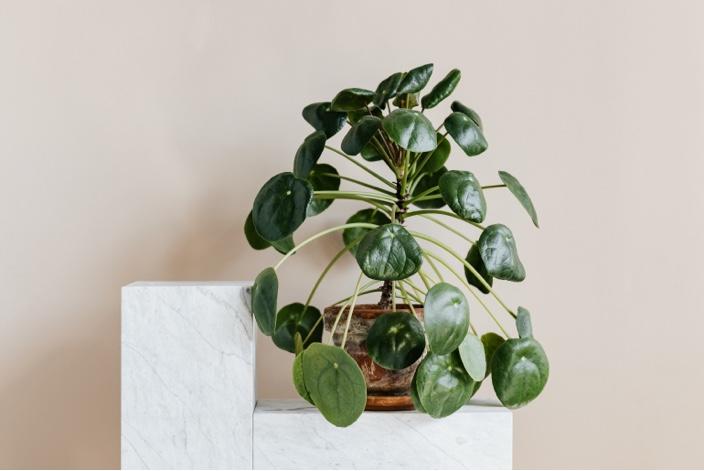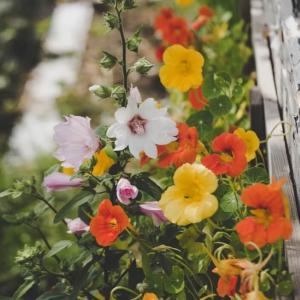
Pilea peperomiodes, sometimes known as the Chinese money plant, missionary plant, pancake plant, pass-it-along plant, and UFO plant, has a dome of lovely and distinctive lily pad-like leaves.
The Chinese money plant originated in southern China and was introduced to the United Kingdom around the turn of the 20th century. It's quite simple to reproduce, so it spread discreetly among houseplant lovers (thus its moniker, the pass-it-along plant), but it was almost unheard of until it became famous on social media a few decades previously. Despite this, Pilea peperomiodes might be difficult to get; it's preferable to visit a specialized home plant store or an internet source. It's also pricey, so if you have a plant-owning buddy, ask them to pot up one of the numerous offspring that sprout around its base for you.
Pilea peperomiodes is a simple plant that is suitable for beginners since it tolerates neglect in terms of watering and feeding. However, if you care for it properly, it will repay you with rapid growth, glossy green leaves, and a plethora of babies at the base.
Pilea peperomiodes develop somewhat differently, and your plant will likely become more upright as it ages. Plants that are older may produce small blossoms.
Pilea peperomiodes develop somewhat differently, and your plant will likely become more upright as it ages. Plants that are older may produce small blossoms.
1. Pilea peperomiodes cultivation
Plant your Pilea peperomiodes in well-drained compost in a warm, bright, but not very sunny location. Water only when the soil begins to dry out.
2.Pilea peperomoides cultivation
Pilea peperomiodes grows best in a warm location where the temperature does not fall below 12°C in winter. Put it somewhere bright - it can withstand some direct sunlight, but not midday or afternoon sun, which can burn the leaves.
3. Planting Pilea peperomiodes
When you get your plant home, there's no need to remove it from its plastic container (unless it's root bound); just place it in a more beautiful pot. When the roots are bound (you'll notice roots growing from the bottom of the container), repot. Plant in a 2:1 soil-based compost (or peat-free, multi-purpose compost) and perlite mix, with drainage holes at the bottom of the container.
4.Taking Care of Pilea peperomiodes
Water frequently from spring through fall, but let the top few cm of the compost to dry out between waterings and let any excess drain away afterwards - Pilea peperomiodes, like other house plants, does not appreciate sitting in cold, moist compost. In the winter, use less water. Feed your home plants once a month using a weak or diluted house plant food. Wipe the leaves down once in a while to maintain them bright and dust-free. You could spray the foliage, but this isn't necessary. Because the plant will naturally drift toward the light, giving it a slanted appearance, rotate it every few days to keep its mounded appearance. If the plant has gotten root bound, repot in the spring.
5.Propagation of Pilea peperomiodes
Pilea peperomiodes is quite simple to propagate. It rapidly develops tiny plants at its base known as offsets or pups, which may be gently plucked with a fork and put in an inch of water. After a few weeks, roots will have grown and you will be able to pot up your new plants. They will grow quickly.
6.Problem-solving Pilea peperomiodes growth
Yellow or brown leaves near the plant's base are typical; these are old leaves that naturally decay and fall off. If you see yellow leaves all over your plant, it might be due to over- or under-watering, so double-check your watering schedule.
Underwatering or overwatering might cause flopping, lackluster leaves; examine the soil to determine which applies to your plant.
Lack of light may cause bending and curling leaves.
Pale leaves may indicate overexposure to direct sunlight. Sunburn causes brown patches on the leaves.
Look for little brown lumps on the leaves if you suspect a scale insect infestation. Wipe them away gently with cotton wool dipped in a fatty acid or plant oil-based pesticide. Act quickly if you see them, since the condition might spread and harm the plant's health.
Powdery mildew may emerge on the leaves as white spots. Improve air flow around the plant by removing the afflicted leaves.
文章
还没有人评论,快来抢沙发!









